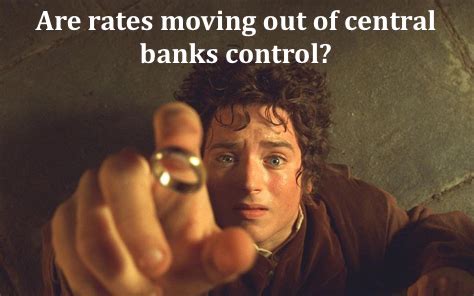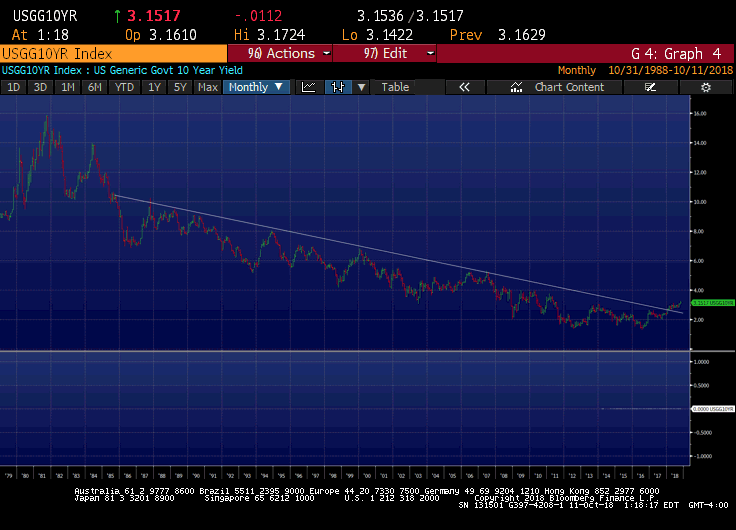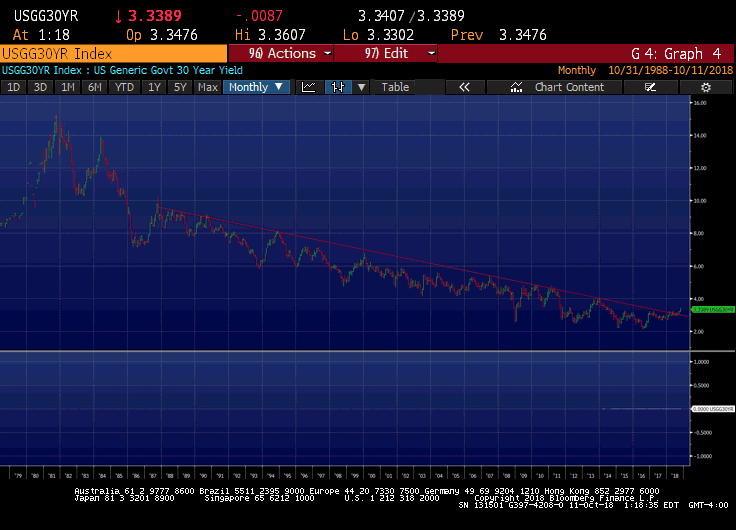
My buddy Kuppy, who I’ve introduced you to many times before and who you can find hanging out here, wrote a piece last week. It’s a great piece and worth sharing. More below, but first…
Talking of hanging out…
Kuppy, as well as Jamie, our resource guru, and Brad, our trading guru, will all be joining me in Singapore next week for a few days.
It’s going to be a blast with a bunch of young, good looking, very smart guys.
Not me. I’m joining them to bring the level down. I’m actually 114 and when I tried one of those IQ tests it couldn’t compute my score. I think I may have fallen asleep and it froze. Amazingly I can still type, though. We’ll be enjoying having a cold one or two with local Insider members on the evening of the 27th.
Over to Harris now.
One Ring To Rule Them All…
Last week, US interest rates completed a multi-year reversal pattern and broke out over a three-decade downtrend line.
I believe that interest rates move in generational cycles and the chart pattern has now confirmed a long-term trend towards higher interest rates. This trend is across the entire US duration curve and appears to have been followed by similar moves in many other global benchmarks. While I do not expect rates to suddenly surge, the trend is clearly in the direction of higher rates and this has consequences.

10-year yields
In our over-leveraged world, the cost of capital is the life-blood of most businesses and a key factor underlying consumer spending.
As credit gets more expensive, interest expense will eat into the earnings of most businesses. As funding costs increase, consumer discretionary income will also decline.
Finally, as yields on government bonds increase, the relative attractiveness of equities will decrease—especially if they’re undergoing a secular trend towards declining profits. Interest rates truly are the one ring to rule them all, when it comes to financial markets.

30-year yields
Turning to property values, the move from a 2% cap rate to a 6% cap rate would entail a 2/3 decline in value and possibly worse if rental income also declines.
If there was a mortgage, it is likely that the mortgage does not cover the equity value—even if it was conservatively mortgaged at the time.
Now set the same paradigm to equity markets and add some financial leverage for good measure. Remember, equity multiples do not only reflect current funding costs — they also look forward many years into the future.













Leave A Comment